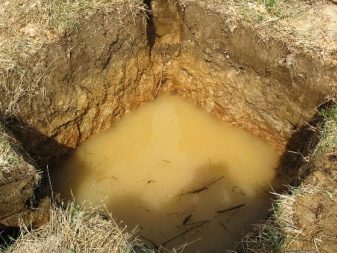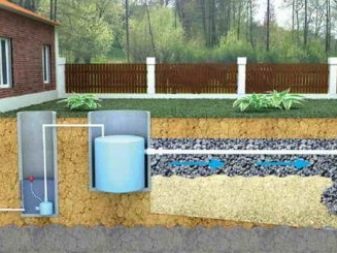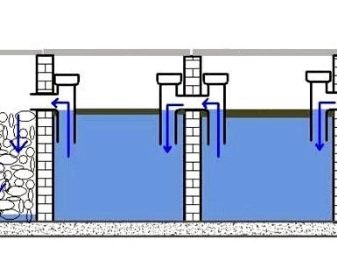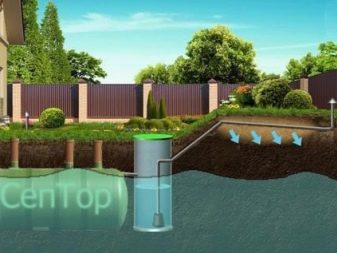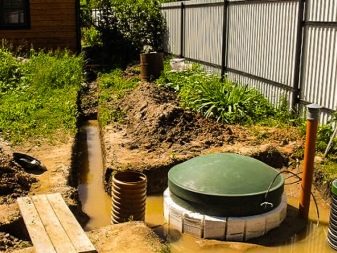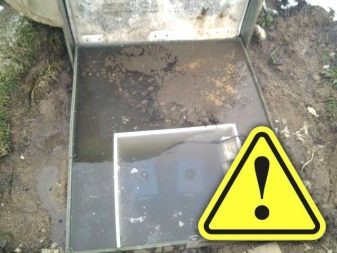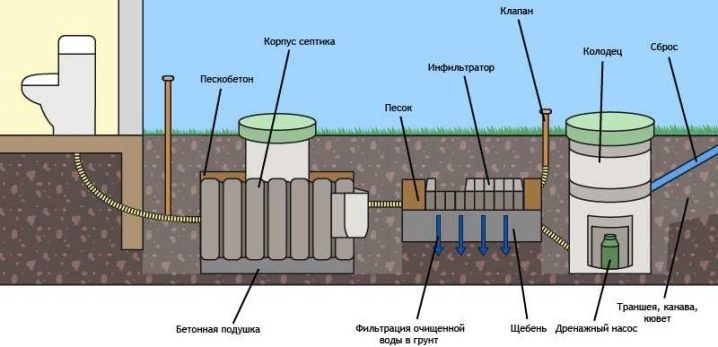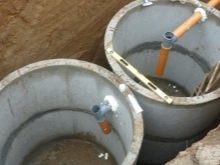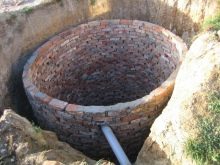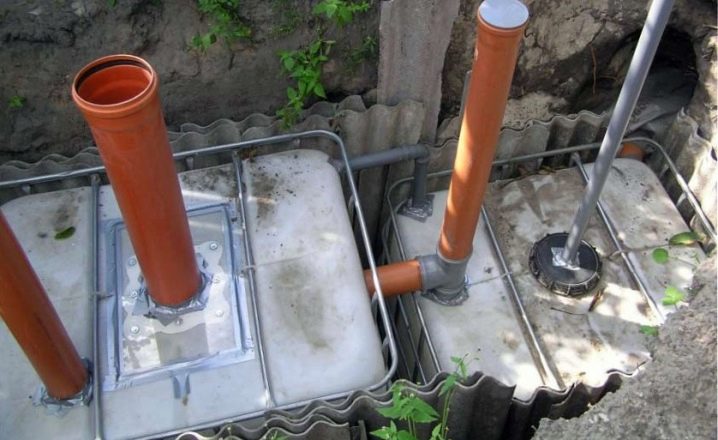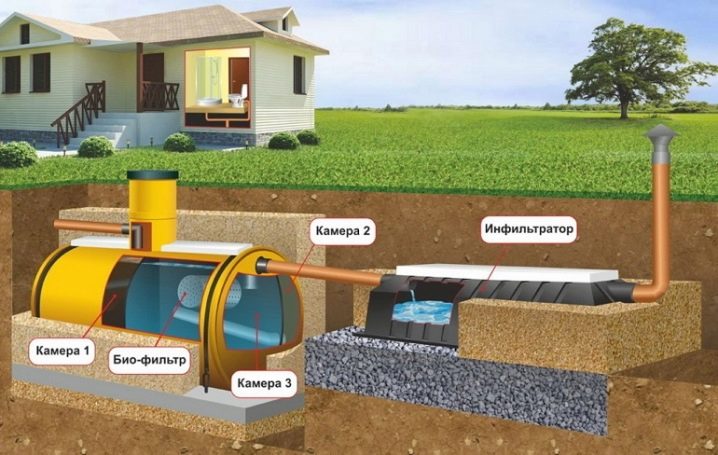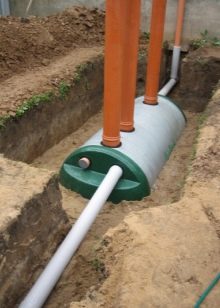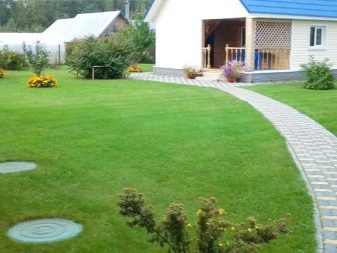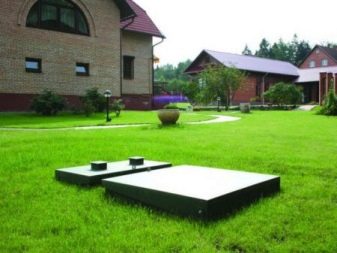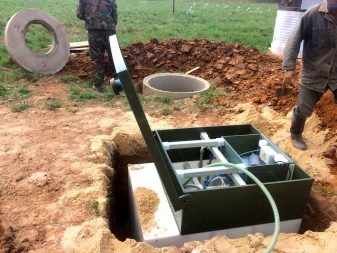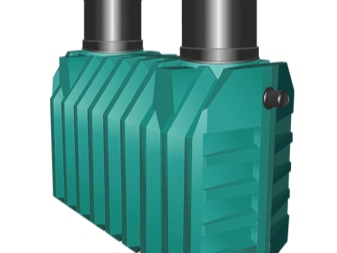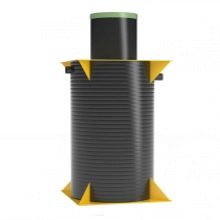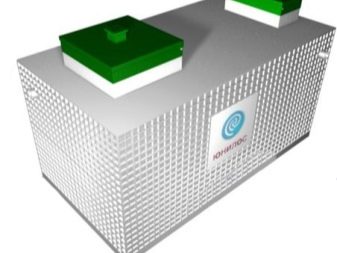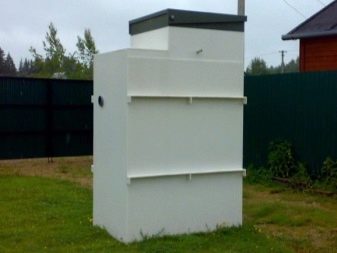Septic tanks for summer cottages with high groundwater levels: tips on choosing
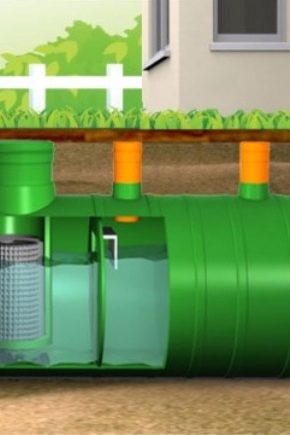
The lack of urban sewage often forces owners of private houses and cottages to equip autonomous treatment facilities on their land plot.
Their effectiveness depends on a large number of very different parameters, including the proximity of groundwater, since the high occurrence of the latter significantly complicates the functioning of septic tanks.
Special features
In order to get rid of sewage, you need a quality sewer system. Many of the old-fashioned build a cesspool, but this option can not be called practical, because the tank must be constantly cleaned, which means a considerable cost for the services of vacuum trucks.Sewage should be disposed of in another way, and in such a way as not to cause damage to the environment, therefore, the best choice can be called a septic tank.
The purpose of the modern septic tank is the accumulation of biological waste, their cleaning and disposal. As a rule, this process occurs in several stages in three different chambers.
- The first is used to collect drainage flows. Here the very first cleaning takes place, with the sewage being stratified so that the harder particles sink to the bottom, and water with a smaller number of impurities flows into the next chamber.
- The second chamber is designed for fermentation of sewage, anaerobic bacteria “work” here, which effectively and at the same time environmentally friendly decompose all types of organic compounds so that the water is purified almost completely and in this form comes next.
- The third chamber contains a special filtration field and a special ground filter cassette, which make the final purification.
If groundwater is located close to the soil surface, this situation may be a homeowner who faces a number of problems, including:
- The complexity of the installation septic tank - even if the seller assures you that the septic tank is easily and simply mounted in the soil of all types, do not believe it. If the groundwater is located in close proximity, the installation of the structure will require a lot of time and effort.
- Ascent septic tank - if the septic tank is not attached to the concrete pad, but is fastened with straps or cables, during a flood there is a high risk that groundwater flows will cause the structure to ascend, which will violate its integrity and damage all horizontal pipelines. In addition, if the sealing is broken, then water is constantly poured into the septic tank, which means that it will overflow more often than it should be, and the services of the nightman will have to be used also more often than usual.
- Full flooding of the structure - the constant flow of water into the septic tank from the outside leads to the fact that it quickly fails, so the water begins to leak not only inside but also in the opposite direction - dirty drains enter the soil and, in turn, pollute the groundwater, and this leads to the fact that the reservoirs nearest to the house are blooming, and the water in them becomes absolutely unsuitable for consumption - and this, perhaps, can be compared with a local ecological catastrophe.Moreover, from a flooded septic tank, water often rises to sanitary appliances in residential premises, which often causes serious damage. Flowing through the pipes, this aggressive liquid can cause the corrosion of the metal elements of the system and violate the integrity of all sewage system equipment. That is why, in case of high-lying groundwater, in no case can one save on materials. The more hermetic the design - the longer the septic tank will work without any failures.
Note that sewage is not only dirt. If the discharge water enters the aquifer, where water intake systems (wells or boreholes) are constructed, this will inevitably lead to diseases of the gastrointestinal tract of people and domestic animals.
Principle of operation
The construction of a septic tank in soils with elevated water levels has several components - it is divided into sewage treatment chambers, but it may consist of three different tanks located separately. A sewer pipe is suitable for the first receiving tank, through which the drains enter the septic tank.The exit of already purified liquid is carried out under strong pressure of the built-in pump. However, there are gravity versions of the device.
If the pumping of water from the septic tank is forced, then the system necessarily includes exhaust pipes with non-return valves., thanks to which the drains entering the pipe do not flow back, but are kept inside the sewage treatment plant.
But if the water flows according to the principle of gravity, then water should be arranged in such a way that it falls into a sealed reservoir. The technology requires that the septic tanks be installed on a concrete cushion; otherwise, during the season of melting snow or during prolonged rains, it may simply float to the surface.
It is very important to dust the septic tank with cement and only then pour it with the soil. If the structure has a drainage pipe, then it should also be equipped with valves that prevent the spreading of groundwater into the device. If the septic tank is not equipped with a pump, then a drainage well is additionally supplied to it, the pump is placed inside the latter, and already with its help water is effectively removed from the septic tank to the ground or a storage tank.
By the way, experts consider the use of a drainage well as the most technological, since this significantly reduces the load on the septic tank and reliably protects it from water ingress from the soil.
Species
If you have to make a decision on purchasing a septic tank for a dacha or a private house, knowing that the ground water in your area is quite close, then you should take into account some nuances when choosing one or another variant of the cleaning device.
First, it is necessary to abandon such septic tanks, which are unable to effectively maintain the drain system in the presence of a large amount of moisture. These include septic tanks:
- from tire covers;
- from brickwork with gaps;
- from concrete rings;
- with perforated drainage pipes.
Such plants have a rather low degree of sealing, so they are distinguished by open access to water leaking inside the structure. The best option in this case are plastic tanks (eurocubes), which are made from solid polymer, for example, from polypropylene.
This material differs in moisture resistance and resistance to differences of temperatures - the working range makes from-40 to +60 degrees.The disadvantages of plastic septic tanks include the risk of cracking during soil heaving and, as a consequence, the need for good protection against ascent and external pressure.
Some manufacturers reinforce plastic septic tanks with fiberglass. Installations made of fiberglass are quite durable, they can withstand the pressure of the soil, and in addition, they are resistant to chemicals. Such septic tanks are very durable - their service life exceeds 50 years. However, like plastic, they are distinguished by low weight, so they have to be anchored in order to prevent floating during the spring flood.
Quite often for the manufacture of septic tanks using reinforced concrete. This option is considered ideal for families in which more than 3 people live, since such facilities are capable of withstanding heavy loads. They are absolutely sealed and do not let water through, due to the large weight they are not inclined to float, and besides, they are resistant to the effects of an aggressive environment of waste fluids.
The construction of a ZhB-septic tank is expensive, but such a construction will last for several decades and will not crack, even if the construction machine accidentally touches it.
Industrial septic tanks differ in quality and high efficiency, however they have a disadvantage - this is a high price. That is why the owners of cottages and country houses for short-term seasonal residence establish the usual storage tanks. The use of the EuroCub allows you to achieve great savings both due to the cost of the device itself, and on its installation.
Septic tanks assembled from Eurocubes have high tightness; they do not allow drains to flow out., and groundwater is not allowed to penetrate inside the chamber. As the septic tank is filled, its contents are pumped out, using assenizatorsky equipment.
Subtleties of use
Installation of a septic tank with his own hands in the conditions of closely located groundwater has its own characteristics. And first of all it refers to the arrangement of the system of protection against ascent and cracking as a result of heaving of the soil. Especially often problems arise with plastic septic tanks, since their own weight is not enough to withstand the pressure of soil moisture, as a result - they quite often float.
To avoid this, spend anchoring. By itself, this technology is quite simple:
- The bottom of the pit must be leveled at the construction level.
- Then it is covered with sand. The thickness of the layer should be about 30 cm, it is carefully tamped.
- Stacked reinforced concrete cushion to the size of the structure.
- A septic tank is installed directly on the stove, fastening it with belts and cables. At the same time between the pit and the wall of the septic tank should remain a gap of at least 15 cm.
- Free space on the sides is filled with a dry mixture of sand and cement in the ratio of 5: 1, watered with water and carefully compact each layer. During backfilling, it is very important to fill the septic tank with water at the same time so that its level corresponds to the level of backfill - this will significantly equalize the load and prevent possible cracking in the future.
Installation Methods
The construction of a septic tank is carried out in the following sequence:
- To begin with, the location of the future septic tank is determined, and the sanitary requirements must be taken into account, which establish that the septic tanks should be located 5 meters or more from the apartment building and not less than 2 meters from the fence.
- The deep ditch is dug out.Its walls are additionally strengthened with material from wood of any species.
- The bottom of the pit is tightened with a layer of waterproofing over which concrete is poured. It is important to concretely concrete the site to achieve maximum structural stability.
- After the concrete has set, another waterproofing layer is laid, on which the reinforced concrete pad is installed.
- It is necessary to pump out all groundwater from the pit.
- Next, you need to collect the ventilation pipe, which is used to remove methane from the upper layers.
- Then you need to install a septic tank and fix it with fasteners.
- The construction is buried.
- On top of the septic tank is closed with a lid, which is equipped with ventilation.
We draw attention to the fact that the efficiency and durability of the structure directly depends on the stability of the septic tank, so this point should be given special attention.
Recommendations
In order for the septic tank to serve faithfully for many years, it is advisable to choose products of reliable manufacturers that have proven themselves in the market and have received the best consumer reviews.Septic tanks of industrial production always differ in tightness and durability.
Let's stop on the most popular brands.
- "Topas" - These are compact and effective septic tanks, which exclude the appearance of any odor, however, they have a rather high cost.
- "Tank" - These are non-volatile plastic constructions. The thickness of the casing walls of such containers is 1.7 cm. These septic tanks are resistant to loads and soil pressure, have a large operating temperature range, and also have a design that completely eliminates the likelihood of floating.
- "Triton" offers a wide range of septic tanks of various sizes and functional purposes. If the installation of such a device is made in accordance with the technical recommendations, then such a structure can work up to 50 years without fail. However, such septic tanks are characterized by low weight, so they must be anchored without fail.
- "Leopard" - These are three-chamber septic tanks that have two levels of biofiltration. Such installations are distinguished by reliability, practicality and durability.
- "Tver" - high-quality septic tanks, which are characterized by small dimensions and good throughput, and the disadvantages include volatility and the need for regular maintenance.
- "Leader" - such septic tanks have 6 chambers of various functional. The design contains airlift as well as an aerator. The advantages of the system include the absence of the need to apply supplements.
- "Ecopan" - this brand is considered to be one of the best in conditions of closely located groundwater, since the installation can withstand any loads and high pressure of heaving soils without any deformations.
- "Yunilos" - this is a bioremediation system, which determines the absolute safety of the structure for the environment, the sewage treatment algorithm here is multistage and complex. However, the septic tank is easy to use and reliable.
- "Poplar" - These are septic tanks of a new generation, equipped with airlifts, aerators and compressors.
When buying a specific modification of a septic tank, it is necessary to clarify with the representative of the trade organization all the features of the installation, since its quality, reliability and tightness largely depends not only on wastewater disposal, but also on the level of comfort and health status of all inhabitants of a private house.
On the installation of septic tanks in high groundwater, see the following video.

